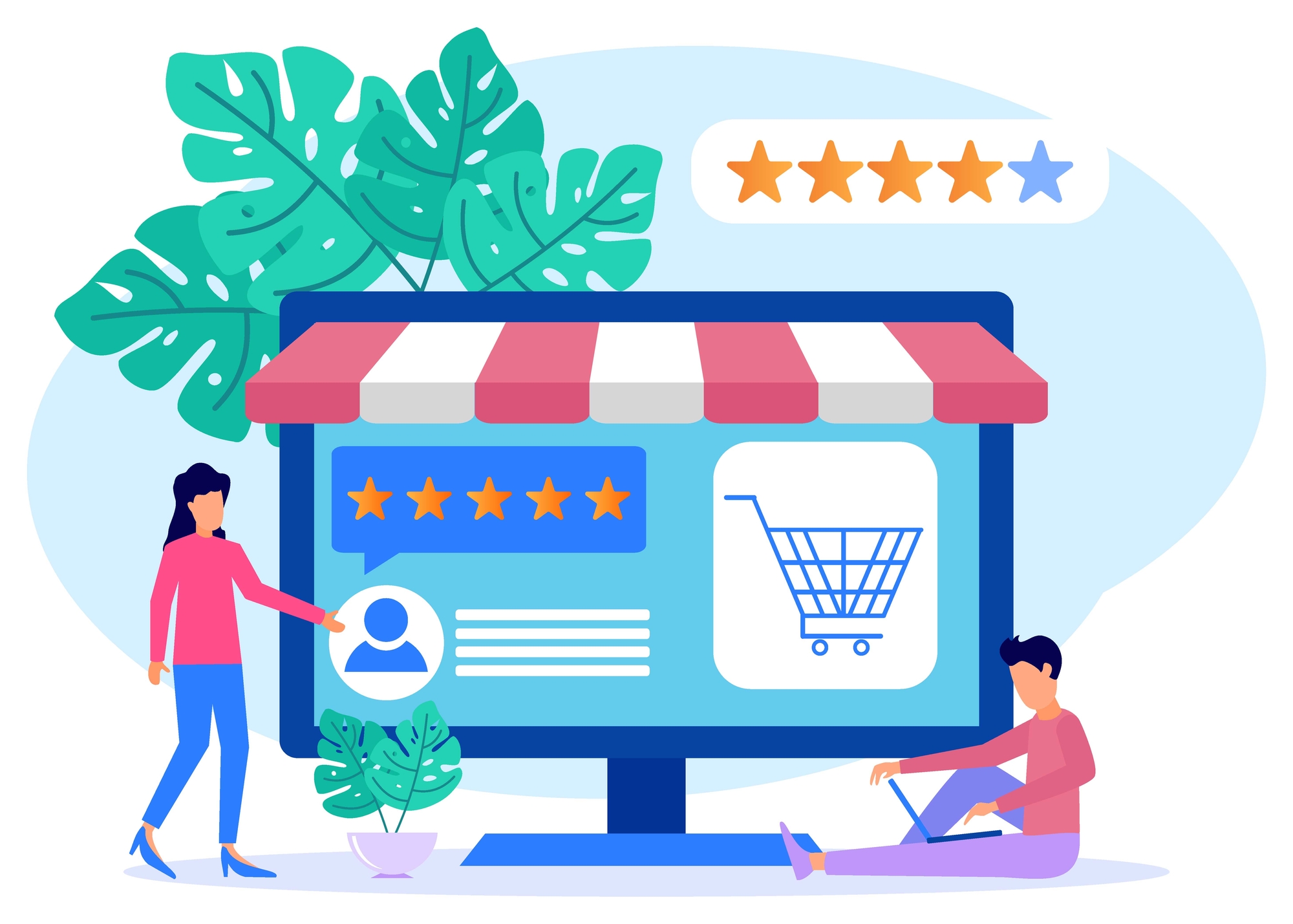
FREE Download For You
Get Top 20
Online Business Ideas
with High Revenue Potential
Ever dream of owning a slice of the online retail world? An online boutique, perhaps?
I did. A thrilling journey of ups and downs – that’s what it was like.
A wild mix of choosing unique products, defining my brand’s identity, engaging with customers on social media platforms – each day brought new excitement and challenges. Yet amidst this frenzy, I learned that running an online boutique is not just about selling; it’s crafting unforgettable shopping experiences.
Intrigued? Good! Because what lies ahead will unravel profitable business ideas for your own virtual fashion empire. It promises practical tips on creating a solid business plan template to building memorable customer engagements. Let’s get ready to explore the potential of a successful virtual fashion empire!
Table Of Contents:
- Understanding Online Boutique Ideas
- Developing a Business Plan for Your Online Boutique
- Identifying Your Target Market and Customer
- Designing Your Online Boutique
- Sourcing Products for Your Online Boutique
- Creating a Memorable Shopping Experience
- Marketing Your Online Boutique
- Building Your Online Presence
- Maximizing Sales and Customer Engagement
- Scaling Your Online Boutique Business
- FAQs in Relation to Online Boutique Ideas
- Conclusion
Understanding Online Boutique Ideas
Exploring online boutique ideas opens up a world of possibilities. From clothing and home decor to shoes, each type offers unique opportunities for aspiring entrepreneurs.
Clothing stands out as the second hottest selling category online. This comes as no surprise given the wide variety we see in our daily lives – women’s clothing, children’s clothes or retail fashion all have their space in the digital marketplace.
Exploring Different Types of Online Boutiques
Different types of boutiques cater to different audiences. For instance, one-stop shops provide everything from women’s clothing to kids’ apparel under one roof.
The beauty lies not just in their diversity but also specificity. Specialty boutiques focus on certain categories like plus-size women’s clothing or maternity wear – they fill a niche that often goes overlooked by larger retailers.
Finding Your Niche: Clothing vs Home Decor?
If you’re drawn towards textiles and trends, an online fashion boutique might be your calling card into this popular business sector.
A key stat:Clothing is only surpassed by home decor when it comes down to revenue generation.
If curating cozy corners sounds more appealing than chasing color schemes though, then perhaps starting an online store for wall art or other decorative items will align better with your interests.
Whether you decide on being a part of the bustling online clothing scene or choose to explore other avenues within ecommerce platform Shopify or similar platforms– remember that understanding your specific interest area is crucial.
Developing a Business Plan for Your Online Boutique
Your online boutique needs a robust business plan. It’s the foundation that will support your dreams of owning a successful online fashion boutique.
Crafting a Solid Business Plan Template
A good business plan pinpoints areas you need to focus on, like startup costs and marketing budget. Let’s break down these crucial aspects.
Startup Costs: Consider all expenses involved in getting your online clothing store up and running. This includes everything from setting up an ecommerce platform like Shopify to sourcing products for sale.
Boutique Launch Formula™ training can help you estimate accurate startup costs by giving insights into industry norms and expectations based on firsthand experience of seasoned boutique owners.
Marketing Budget: The success of any online business heavily depends on its visibility. Allocate funds wisely across different channels such as social media platforms or paid advertising to get maximum exposure without burning through your resources too quickly.
- Utilizing social media platforms can be a great way to boost your online presence, engage with customers and drive traffic.
- Paid Advertising: Pay-per-click (PPC) campaigns could be expensive but they often provide quicker results than organic efforts.
The goal here is not just about making sales but also providing an enjoyable shopping experience that keeps them coming back again.
To put it bluntly – planning is tedious work. But it’s necessary if you want this venture to bloom into something beautiful instead of wilting away prematurely due to poor preparation or lackadaisical execution.
Identifying Your Target Market and Customer
Your online boutique’s success hinges on understanding your target market. The question is, who are they? What fashion styles do they prefer? Do you aim to cater to women looking for plus-size clothing options or a different demographic entirely?
Research 1 points out that plus-size women’s clothing boutiques help fill a void in the marketplace. That means there’s an opportunity waiting if you choose this as your niche.
Figuring out what these shoppers are after, whether it be a range of options, superior materials, distinctive designs or competitive prices (or all four.), is key to selecting items that will really appeal to them and result in more sales. Are they seeking variety, quality materials, unique designs, affordable pricing—or all of these combined?
This knowledge will guide how you curate inventory for your store; choosing items that resonate with them increases the likelihood of customer purchases. In turn, it can give your business a huge boost.
Pinning Down Your Target Customer Profile
Developing a clear customer profile helps streamline marketing efforts by enabling targeted campaigns tailored specifically towards potential buyers’ preferences.
You could use demographics such as age range or geographical location as starting points—maybe most of your prospective shoppers belong within certain age brackets or live in specific areas where trendy boutiques thrive.
Catering To Your Customers’ Needs And Wants
In addition to knowing WHO shops at online boutiques like yours, understanding WHAT drives them makes sense too. Is comfort more important than style? Or does being fashion-forward trump everything else?
Digging into buyer psychology helps identify products likely popular among customers – thus increasing sales opportunities. This process requires patience but yields fruitful results over time.
Designing Your Online Boutique
The design of your online boutique is a vital component in creating an appealing shopping environment. It’s about more than just picking the right color scheme; it involves carefully choosing fonts, layout, and even navigation features.
You need to consider that a good design not only enhances aesthetic appeal but also improves usability. For instance, let’s talk about website fonts – they can significantly impact how users perceive your brand. You want to use legible and clean font styles that match your boutique’s style while making sure customers have an easy time reading product descriptions or blog posts.
Your color scheme should reflect the personality of your business. A bright, bold palette might work well for children’s clothing boutiques or fun accessories stores; however, if you’re selling luxury items like high-end fashion pieces or designer handbags, you might opt for something more subtle and sophisticated.
A successful online store doesn’t happen by chance – there are countless hours spent planning and perfecting every detail from branding elements such as logo designs down to menu layouts on mobile devices (because yes: mobile compatibility matters.). In fact, according to the Adobe Digital Insights report, 58% of site visits were made via smartphones in 2018.
Navigating The Design Process
To make things easier for yourself during this process, take advantage of platforms such as Shopify which offer user-friendly ecommerce platform solutions with built-in templates designed specifically for retail businesses. Not only does it save time, but it ensures a professional look without needing extensive coding knowledge.
Making User Experience Priority
An intuitive interface makes all the difference when designing your online shop because ultimately what keeps people coming back is their overall experience rather than price points alone. This means thinking through each step from browsing products all the way through to checkout and ensuring it’s seamless.
Creating a seamless shopping experience is essential for designing an aesthetically pleasing boutique. So remember: in design as with everything else – simplicity is key.
Building your online boutique isn’t just about looks. Picking the right fonts, layout, and colors to represent your brand is key, but don’t forget usability. Make sure it’s easy to use on mobile too. To make things easier, you can use platforms like Shopify for slick templates. Most importantly though, strive for a smooth user journey from browsing through checkout.
Sourcing Products for Your Online Boutique
Discovering the right products to offer is a major component of managing an online boutique. It’s about more than just filling your store with items – it involves selecting products that align with your brand and appeal to your target market.
One way you can source goods for your boutique is through reliable clothing suppliers. These businesses offer various fashion pieces, from trendy tops to stylish shoes, which are highly popular online according to recent research data.
You might also consider working with a dropshipping supplier. This type of business model lets you list their products on your site without having them in stock physically. When customers make a purchase, the supplier will ship the item directly to them while you get profit from the marked-up price.
The question now arises: how do I choose my dropshipping partner?
A great place to start would be this guide on choosing a dropshipping supplier. Here, we discuss key considerations such as shipping timeframes and product quality control so that every customer purchase contributes positively towards building trust in your brand.
Your inventory decisions should ultimately reflect what makes sense for both yourself as an entrepreneur and those who’ll patronize your shop online. Remember: variety may spice up life but cohesion brings consistency – and customers love consistency.
Creating a Memorable Shopping Experience
A top-notch shopping experience is like the cherry on top of your online boutique. It’s not just about selling products, but also about creating an atmosphere that makes customers feel valued and eager to return.
Creating an inviting atmosphere on your website that encourages customers to explore and appreciate the products you offer is essential. This means having user-friendly navigation, appealing visuals, and detailed product descriptions with high-quality images.
Easing The Buying Process
Creating an uncomplicated shopping journey for your customers is essential to ensure a stress-free experience. An intuitive checkout system lets them complete their purchase quickly without unnecessary complications.
This includes clear pricing information and multiple payment options so they can choose what suits them best. But remember: surprises at checkout are never fun. Make sure shipping costs or taxes aren’t hidden until the last moment – this could turn away potential buyers.
Personalized Customer Service
Top-tier customer service plays a huge role in making shoppers feel special. Consider incorporating live chat support or even AI-driven chatbots into your site design – these features help answer questions swiftly and efficiently which ultimately helps enhance customer satisfaction levels.
Fostering strong relationships through excellent service leads to loyal customers who will promote your store via word-of-mouth or social media shares – free marketing at its finest.
Marketing Your Online Boutique
The digital marketplace is bustling with online boutiques. But what sets the successful ones apart? A powerful marketing strategy that uses social media platforms and paid advertising.
Leveraging Social Media Platforms for Marketing
Social media can be a treasure trove for connecting with potential customers. Facebook, Instagram, Twitter – these are not just apps but your ticket to building brand awareness. Character-driven stores based on favorite movies or TV shows have been found successful (Research 2). Imagine promoting Star Wars-themed clothing around May 4th. You’d attract an audience as vast as the galaxy itself.
Paid ads play a pivotal role too. They help you reach people who may not even know they need your products yet. The power of targeted ads should never be underestimated in an online boutique’s marketing plan.
You could use carousel posts on Instagram showcasing different outfits from your women’s clothing collection or put up story polls asking followers their preference between two dresses – this gives them a sense of involvement while also giving you insight into customer preferences.
To add more spice to your strategy, don’t forget email marketing. It helps keep loyal customers informed about new arrivals and special discounts – making sure they come back for more.
BOUTIQUE BUSINESS BUNDLE offers comprehensive guidance on crafting winning strategies for social media marketing and using paid advertisements effectively.
Building Your Online Presence
The journey to create a powerful online presence starts with your boutique’s digital footprint. It’s not just about having an online store; it’s more about creating a brand that resonates on various social media platforms.
Your first step is to make sure you have a solid SEO strategy. Why? The purpose is for potential customers to be able to locate and shop at your store without having prior knowledge of it; hence, a well-thought-out SEO plan is essential.
You can optimize by using relevant keywords in product descriptions, blog posts or any other content on your site. The use of SEO helps increase visibility in search results, driving organic traffic towards your website.
Leveraging Social Media Platforms
Social media platforms are vital tools when building an effective web presence for successful online boutiques. They let us engage directly with our audience while showcasing products and promoting our brand identity.
From Instagram’s visually engaging layout perfect for displaying fashion items, to Facebook’s wide reach suitable for running targeted ad campaigns – each platform offers unique advantages. “Remember. It’s not just selling; it’s storytelling.”
Maintaining Active Engagement
A strong online presence isn’t built overnight but requires consistent effort over time. Regularly posting quality content engages followers and encourages them to share with their networks – spreading word about your business further than paid advertising alone could ever achieve.
Maximizing Sales and Customer Engagement
To grow your online boutique, you need to boost sales and ramp up customer engagement. Offering discount codes is one practical way to achieve this.
Everyone loves a good deal. A well-timed discount code can motivate customers to make that all-important purchase. It’s like dangling a carrot in front of them – but the catch? They’ll have to act fast before the offer expires.
Apart from stimulating sales, discount codes also foster customer loyalty. When customers feel valued through these special offers, they’re more likely to stick around and even recommend your store.
Crafting Your Discount Strategy
The key here is not just offering discounts willy-nilly but creating an effective strategy tailored for your business needs. Here are some things you could consider:
- Sales Thresholds: Offer discounts when purchases exceed certain amounts (for example $100).
- Limited-Time Offers: These create urgency among buyers as they race against time.
Making it Personal
Incorporating personalization into your marketing strategy adds another layer of appeal. How about giving first-time visitors or loyal customers unique coupon codes? Or perhaps celebrating birthdays with special birthday discounts?
Promoting Your Discounts Effectively
Your fantastic deals won’t matter if no one knows about them. This calls for strategic promotion across multiple channels such as social media platforms where you can reach potential shoppers directly.
Scaling Your Online Boutique Business
The growth of your online boutique isn’t a sprint; it’s more like an adventurous marathon. Scaling up involves strategic planning and constant adaptation, but remember – you’re not alone in this journey. There are numerous profitable business ideas for aspiring entrepreneurs looking to expand their horizons.
An excellent strategy is exploring new markets. Just as hair bundles, handmade jewelry, and beauty items have proven to be profitable online boutique ideas (Research 2), don’t hesitate to branch out into these areas if they align with your brand ethos.
Finding New Markets
To identify potential markets, start by analyzing customer purchase data and trends on social media platforms. Look at what other successful boutiques sell and consider if those products would suit your clientele. Be bold; try something different.
Expanding Product Range
Broadening the range of products offered can also lead to scaling success. If women’s clothing has been flying off your virtual shelves, why not add children’s clothes or men’s accessories?
This strategy doesn’t mean compromising on quality or losing focus though. It simply means diversifying while still staying true to your brand identity.
Leveraging Marketing Strategies
Effective marketing strategies will help spread the word about new offerings faster than any fashion rumor mill ever could. Utilize paid advertising options available on various social media platforms such as Instagram or Facebook Ads for quick reach. Here is a handy guide on how Facebook ads work.
FAQs in Relation to Online Boutique Ideas
How profitable is an online boutique?
An online boutique can turn a tidy profit, but it hinges on your chosen niche and marketing savvy. A well-run store might net around $50k annually.
What do you need for an online boutique?
To launch an online boutique, you’ll need a clear business plan, reliable suppliers, catchy website design and solid marketing strategies to draw in customers.
How do I become a successful online boutique owner?
Becoming a thriving boutique owner means knowing your target market inside out. You also have to keep refining your product line-up and customer experience.
How do I start an online clothing store from scratch?
To kickstart your own clothing store, identify the right niche first. Then work out sourcing arrangements with dependable suppliers before crafting an enticing web presence.
Conclusion
Starting an online boutique is more than just selling products. Forming a specialised buying experience that encourages patrons to return is essential for launching an online boutique.
Creating a unique shopping experience requires exploring the diverse range of options available in online retail, such as clothing and home decor boutiques.
An effective business plan, understanding your target market and customer preferences are crucial elements to kickstart this journey. Designing an appealing boutique and sourcing quality products aligns with offering memorable shopping experiences.
Marketing strategies such as leveraging social media platforms can amplify reach while building strong online presence boosts brand visibility.
In essence, starting an online boutique involves thoughtful planning and execution at each step. With these tips in mind, let’s turn those exciting online boutique ideas into reality!
Ready to start growing your own money tree? Building an online business from home offers incredible freedom and income potential. To get started on the path to passive earnings, download our free guide outlining 20 profitable online business models.

FREE Download For You
Get Top 20
Online Business Ideas
with High Revenue Potential







